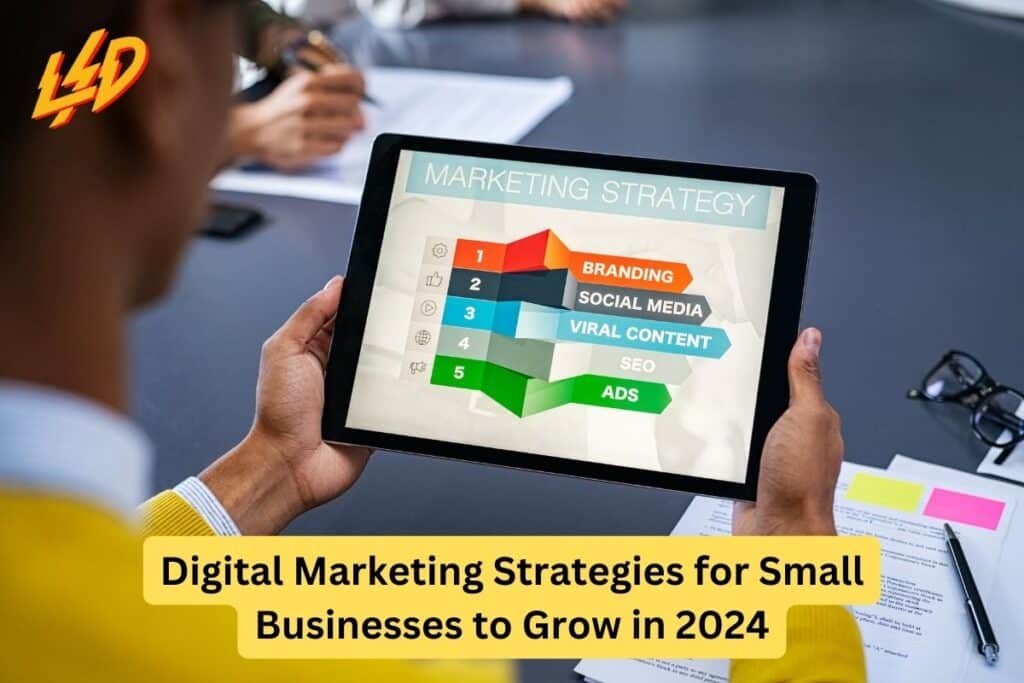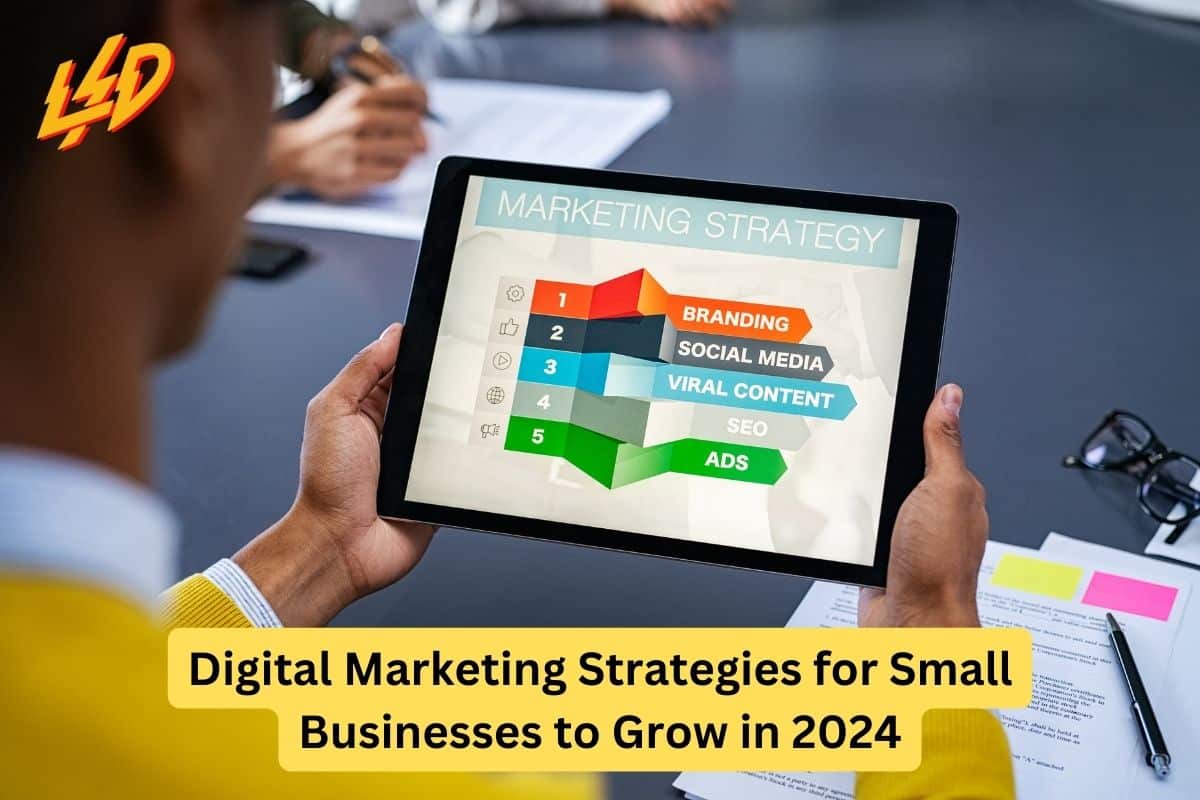In the changing world of tech and the internet, small businesses can’t ignore digital marketing anymore. Looking at 2024, having a strong online game is a must. It’s how you grow and keep up. Even the little companies can fight for a spot in the market with the right moves. We’re going to talk about simple but powerful ways for small businesses to shine online in 2024.
Making Your Website Great
Your website is like your shop window on the internet. It needs to look good and work well, especially on phones. Everyone’s on their phones these days!
Beyond aesthetics, your website must load quickly and navigate effortlessly, as today’s consumers lack the patience for slow or cumbersome websites. Speed optimization is a critical factor, not just for user experience but also for SEO, as search engines favor fast-loading pages. Integrating clear, intuitive navigation and easily accessible contact information helps guide visitors towards making a purchase or inquiry. Additionally, optimizing for accessibility, including alt text for images and voice navigation compatibility, ensures your website is inclusive for all potential customers.
Personal Tip: Make sure your website loads quickly and is easy to use.
Resources & Guide:
- Use tools like Google’s PageSpeed Insights to check your site speed.
- Make your website “responsive” so it looks good on any device.
- Learn basic SEO (Search Engine Optimization) to appear in Google searches. A good place to start is the Beginners Guide to SEO by Moz.
Sharing Great Content
What you say online is really important. It’s how you show you know your stuff. This can be through blogs, videos, or podcasts. Create stuff that helps people, and they’ll trust your brand.
Sharing exceptional content isn’t just about proving your expertise; it’s about creating genuine connections with your audience by answering their questions and solving their problems. This approach turns first-time visitors into repeat guests and, eventually, loyal customers. Diversify your content with how-to guides, infographics, and case studies to cater to different learning styles and preferences. Remember, consistency is vital in content creation — regular updates signal to both search engines and your audience that your brand is active and current. Invest time in understanding the topics that resonate with your demographic and track the performance of your content to refine your strategy continually.
Personal Tip: Solve your customer’s problems with your content and they’ll come to you when they need help.
Resources & Guide:
- Write blogs that answer common questions in your industry.
- Start a YouTube channel or podcast to reach people in a new way. Use platforms like Anchor.fm for podcasts and Canva for video graphics.
- Share your content on sites like Medium or LinkedIn to get more eyes on it.
Being Social the Smart Way
It’s not just about being on any social media, but being where your people are. Talk with them, not just to them. Make friends who can become buyers.
Being social the smart way requires more than just regular posting; it involves strategic engagement and an authentic voice that resonates with your audience. In 2024, the focus is on building communities rather than just followers. This means actively participating in conversations, asking for input, and showing appreciation for customer feedback. Utilize tools like polls and live videos to foster a more interactive experience. Most importantly, be genuine. Users can easily detect insincerity, and nothing builds trust like genuine communication. To stand out, small businesses should also leverage user-generated content, which not only provides authentic material but also encourages community members to become brand advocates.
Personal Tip: Be sincere and interactive on social media to build a community around your brand.
Resources & Guide:
- Engage with your followers by responding promptly to messages and comments.
- Feature user-generated content on your channels to enhance trust and community feel.
- Schedule regular Q&A sessions or live streams to engage with your audience in real-time.
Personal Tip: Be real and helpful, not salesy.
Resources & Guide:
- Pick one or two social platforms to start with. Go where your customers like to hang out.
- Use tools like Hootsuite to plan your posts.
- Engage by commenting and sharing.
Good Email Marketing
Emails are still a super way to reach out. Grow a list of emails, send people stuff they like, and watch how they respond to tailor your approach.
Building a robust email marketing strategy goes beyond merely sending out mass newsletters — it’s about nurturing a relationship with your subscribers. The key is personalization. This could mean segmenting your audience based on their interests or past behavior and crafting messages that feel tailor-made. Use email to deliver value through exclusive content, early access to sales, or insightful industry tips that subscribers won’t find anywhere else. Measurement is equally important. Pay close attention to open rates and click-through rates to understand what captures your audience’s attention, allowing you to fine-tune future campaigns. Lastly, always ensure your emails are mobile-friendly, as a significant percentage of users check their email on mobile devices.
Personal Tip: Personalize and provide value in your emails to engage your subscribers effectively.
Resources & Guide:
- Use email segmentation tools like Mailchimp to send targeted campaigns.
- Offer incentives to join your email list, like discounts or free ebooks.
- Test and optimize by tracking metrics and conducting A/B testing for subject lines and calls to action.
Smart Paid Advertising
Want to get seen fast? Paid ads can help. You can use Google Ads, or social media ads to reach more peeps. Remember to follow up with folks who showed interest.
Paid advertising can be a game-changer for small businesses looking to reach a broader audience. However, it’s crucial to have a clear understanding of your target market and allocate your budget wisely. Research the platforms that best align with your goals and are most frequented by your demographic. For instance, if you’re targeting young adults, Instagram or TikTok may be more effective than Facebook. Utilize the targeting features available to focus on specific audiences and track your progress to make necessary adjustments. Additionally, remember that paid ads work best when paired with other marketing strategies like email follow-ups or remarketing campaigns.
Personal Tip: Start small, test, and then invest more in what’s working.
Resources & Guide:
- Set a budget for advertising and stick to it.
- Learn the basics of running ads on platforms like Facebook and Google.
- Use retargeting ads to remind people who visited your site to come back.
Using Influencers Wisely
Getting someone popular to promote you can do wonders. Pick influencers who fit your brand and measure if it’s working. You can offer money or free stuff.
Influencer marketing has exploded in recent years, and for a good reason — it works. With the rise of social media, it’s easier than ever to reach out to influencers in your industry who align with your brand image and values. However, be mindful not to solely focus on follower counts; micro-influencers with smaller followings can have a more engaged audience and result in a higher ROI. Once you’ve identified the perfect influencer for your brand, ensure that they create authentic content that fits seamlessly into their usual posts. And don’t forget to track results to see if the partnership is yielding the desired outcome.
*Personal Tip: Choose influencers who align with your brand values and track results to determine
Personal Tip: It’s all about working with the right people.
Resources & Guide:
- Find influencers in your niche on platforms like Instagram or TikTok.
- Tools like Upfluence can help identify relevant influencers.
- Track how much traffic and sales come from influencer shoutouts.
Decisions Based on Data
Figure out what’s working and what’s not by checking the stats. Use what you learn to make better choices next time.
Data is a powerful tool for small businesses, especially when it comes to decision-making. Utilize data analytics tools like Google Analytics or Facebook Insights to track website traffic, social media engagement, and other key metrics. This information can help you understand what marketing strategies are working and where adjustments need to be made. Additionally, don’t neglect customer feedback and surveys as valuable sources of data. Use a combination of quantitative and qualitative data to make informed decisions that will benefit your business in the long run.
Personal Tip: Be a numbers detective – the clues are in the data.
Resources & Guide:
- Use Google Analytics to track website visits and where they come from.
- Learn about A/B testing, which means trying two options to see which one people like more.
View More: Pros and Cons of Hiring an Individual Freelancer vs. an Agency
In Conclusion
Digital marketing always changes, so keep up with the new stuff to keep growing. Use these easy strategies and always be ready to try new things.
In today’s digital age, it’s essential for small businesses to have a strong online presence and utilize digital marketing strategies effectively. As technology continues to evolve rapidly, staying up-to-date with new trends and platforms is crucial. However, remember that the most effective marketing strategies are those that prioritize personalization, value delivery, and data-driven decision-making. By incorporating these tips into your marketing efforts, you can reach a broader audience, engage with them effectively, and drive business growth. Keep learning and experimenting to find what works best for your brand, and don’t be afraid to try new things. Happy marketing! #HappyMarketing #Personalization #DataDrivenDecisions End of Document –>
Additional Tips:
- Utilize social media analytics to track engagement, reach, and other key metrics for your business accounts.
- Stay updated with the latest digital marketing trends through blogs, webinars, and online courses.
- Collaborate with other small businesses or influencers in your niche to expand your reach and tap into new audiences. #CollaborationOverCompetition
- Don’t be afraid to try unconventional or creative approaches in your marketing strategy; it could set you apart from the competition.
- Always prioritize providing value to your audience and building genuine connections rather than solely focusing on making sales. This approach can lead to long-term customer loyalty and brand advocacy. #ValueOverSales
- Continuously monitor and analyze data to identify patterns and areas for improvement in your marketing efforts. #DataIsKey
- Remember to regularly review and update your target audience and adjust your marketing strategies accordingly. Targeting a specific demographic can lead to higher conversion rates and more significant results. #KnowYourAudience
Frequently Asked Questions:
To measure ROI, subtract the cost of your digital marketing efforts from the revenue generated from those efforts, then divide by the total cost. ROI = (Revenue – Cost) / Cost. Use tools to track conversions tied to campaigns, such as Google Analytics for website traffic and conversion tracking on social media ads.
How do I measure the return on investment (ROI) for my digital marketing campaigns? To measure ROI, subtract the cost of your digital marketing efforts from the revenue generated from those efforts, then divide by the total cost. ROI = (Revenue – Cost) / Cost. Use tools to track conversions tied to campaigns, such as Google Analytics for website traffic and conversion tracking on social media ads.
Email marketing remains a highly effective digital marketing strategy due to its direct and personalized approach. Grow your email list organically through newsletter sign-ups on your website, offering valuable downloads or webinars, and leveraging social media platforms to encourage sign-ups with teasers of exclusive content or discounts.
The frequency of posting can vary depending on the social media platform and your audience. It’s generally recommended to post at least once a day on platforms like Instagram and 2-3 times per week on LinkedIn, but always prioritize quality over quantity. As for timing, use your social media analytics to understand when your audience is most active. Typically, early mornings, lunchtimes, and evenings are good starting points to test engagement.
















